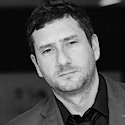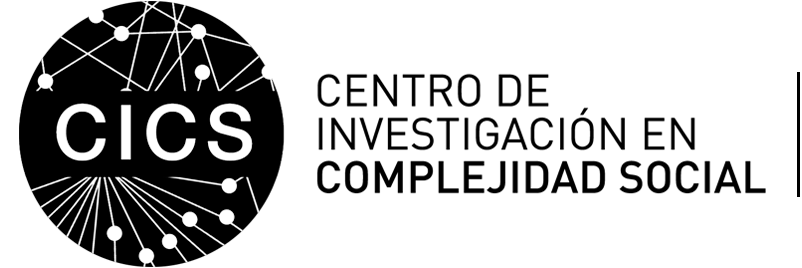[Invention Patent] “A method for processing cerebral images”: the challenge of detecting the epilepsy early
Thursday, 24 January, 2019 | NEWS, PROJECTS The PhD. in Medical Sciences, Francisco Zamorano Mendieta, of the division of Neuroscience of the Research Center for Social Complexity (CICS) of the Faculty of Government of the Universidad del Desarrollo, is one of the scientists who comprise of the Centro Avanzado de Epilepsia of Clínica Alemana de Santiago. Each week, cases of patients with different levels of epilepsy and who are also possible candidates for surgery, are analyzed to determine the strategy to use and to study the structures involved, according to the information and images obtained previously.
The PhD. in Medical Sciences, Francisco Zamorano Mendieta, of the division of Neuroscience of the Research Center for Social Complexity (CICS) of the Faculty of Government of the Universidad del Desarrollo, is one of the scientists who comprise of the Centro Avanzado de Epilepsia of Clínica Alemana de Santiago. Each week, cases of patients with different levels of epilepsy and who are also possible candidates for surgery, are analyzed to determine the strategy to use and to study the structures involved, according to the information and images obtained previously.
Many epilepsies occur in the Left Hemisphere which, in most individuals, is the dominant hemisphere that controls language, logical thinking, and writing. It also contains the Broca’s and Wernicke’s areas (both specialized in the language). If one of these areas has an injury, the surgeon should intervene without removing these eloquent areas. In other words, it is about minimizing the risk of affecting or damaging some primordial function.
Background
In order to determine whether a patient qualifies or not for epilepsy surgery, several tests must be performed: first, a clinical evaluation; then, a surface electroencephalography is performed; later, imaging studies (MRI); finally, a PET study (Positron Emission Tomography) can be performed. The lattest is an imaging test that uses a molecule of biological importance labeled with a radioactive isotope, called a “radioligand,” whose function is to identify pathologically altered processes or structures.
It is at this point that the following questions arise: “how do we know which areas of the cortex are really involved? Which one should be resected?”. To be able to answer them, the patient is treated with radioactive glucose – which is metabolized in the brain – since when it is in an ictal period, the region where the lesion is, is going to consume much more glucose than the rest: about 10 or 20 times more. Depending on the patient, there are some who may have seizures every two days, once a week, ten seizures a day, and “those are candidates for surgery,” says the CICS researcher.
However, for Dr. Zamorano, it is still difficult to determine the exact place where the lesion is located, which is why it is necessary to carry out interictal studies, that is, between crises, where the epileptogenic region decreases glucose consumption, but also decreases it in relation to the rest of the cortex. By comparing both hemispheres of the brain, you can see which areas show more or less glucose and, then, you can estimate where the lesion is. But, the CICS researcher insists that “PET does not have good spatial resolution; then it is very difficult to identify the lesion accurately”.
The invention patent
After this clinical need detected by PhD Francisco Zamorano together with PhD Pablo Billeke, both neuroscientists, this invention initiative arose having the support of the Universidad del Desarrollo, through the Oficina de Desarrollo Tecnológico iCono UDD and the Unidad de Imágenes Cuantitativas Avanzadas of Clínica Alemana de Santiago and the Clínica Alemana de Santiago.
By using an algorithm, the healthy side – already known from the electroencephalogram performed – is determined. In this way, it is possible to create a virtually healthy brain based on information from the non-injured hemisphere, that is, a healthy brain is created from a diseased one.
Given the toxicity of the different radiotracers, their use is reserved for cases of refractory epilepsy, because there is a risk of carcinogenesis that increases during the processes of cell replication, mainly in childhood.
Thus, the idea proposed by Dr. Zamorano allows that, for every child who takes this test, a new, virtually healthy brain can be generated. In this way, a comparison can be made between the two brains (healthy and sick), but a qualitative result will be obtained; however, in this stage a quantitative study based on values from virtually healthy brains obtained from previous patients, specific for the age range, can be performed.
Finally, an analysis is performed that allows the comparison of each voxel of the patient’s brain with a normal distribution, corresponding to the voxel of the database. In this way it is possible to generate a cortical map of probabilities that will indicate the region that presents the pathological alteration in a precise manner.
In summary, the proposed method allows a database generation in which, the more patients that perform this test, the more robust the database will be and, therefore, the results will be more precise. In addition, we would obtain a children database that does not currently exist. “The patent is the method, not the database,” says Zamorano. “And that method can be occupied in any way, changing forms, using different algorithms, but following the steps that are delivered,” he concludes.


